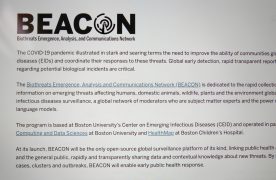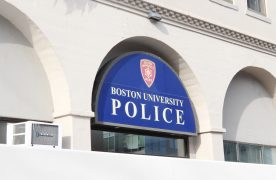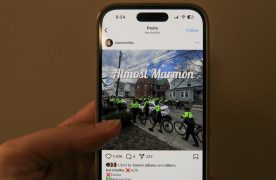Jogging through Brookline, one sees picturesque lawns and historical plaques. Turning a corner may reveal a spontaneous pick-up soccer match in a park or families strolling their children down wide, wooded streets. For many, this homey, suburban identity is what drew them in as prospective residents. It makes this hamlet, separate from Boston’s sometimes tangled jurisdiction, a secluded and exclusive gem. It is this exclusivity and peace that is being threatened by a potential plan.
Chestnut Hill Realty, a Boston area-based developer with properties across Massachusetts and Rhode Island, proposed a 21-story building to be constructed in the Coolidge Corner area, according to a Boston Globe article. Beyond its towering height, the proposed building would also include a large parking garage and landscaped “open space,” according to the article.
Immediately following its announcement, the proposal has been met with significant pushback.
“Twenty-one stories should be in the Financial District or the Seaport District, not in Brookline,” Neil Wishinsky, the town’s chair of the board of selectmen, said to the Globe. He also said that a smaller project with a hotel would be a better fit for the neighborhood.
Despite alternatives, the idea of development and the proper way of going about it seems to always find its way into the conversations of Bostonians. From new apartment buildings in Allston to skyscrapers in Downtown Crossing, there is always a new building pushing the expected shape and limit of the skyline.
Brookline, however, is not the place for this to continue. Coolidge Corner is a homely and local-focused neighborhood, characterized by its iconic movie theater and delicious restaurants. More than that, the tallest building in Coolidge Corner is certainly no taller than the top spire of our own College of Arts and Sciences. The low-lying profile is what separates downtown from hamlet, and we like the distinction. Erecting a 21-story building next to the local Trader Joe’s just seems out of place.
There is a difference between stating that something is out of place and denying other kinds of development. Like Wishinsky, we believe that there are alternatives to this proposal. Development is not a bad thing; it can revitalize communities through well-thought-out investment.
Fenway is a perfect example of this development. As students living in the area, we’ve witnessed the neighborhood go from highly residential to a Target mecca, and we could not be happier. From sweetgreen to Chipotle to Sephora, these are amenities that students and permanent residents enjoy, bettering their experience.
Fenway is undeniably different from Brookline, as all Boston neighborhoods are incredibly different. Fenway was grittier before its transformation, its median family home price is less than $1.6 million and it houses this little thing called Fenway Park, which attracts loud and often boisterous crowds at inconvenient hours. Brookline, and Coolidge Corner specifically, has a Peet’s Coffee, an organic market and a quaint but imposing clock tower. Despite their differences, both can benefit from further development.
The difference must be in how that development takes place. More apartments would alleviate some stress from area residents through a higher abundance of options, but only if the rent of those apartments is affordable. According to the Globe article, “64 units — mostly one- and two-bedroom apartments — meet affordability rules under Chapter 40B,” which is a good start, but, again, not in the context of a massive building.
The question of development has been and will always be difficult to navigate. Inevitably, change comes to neighborhoods, whether good or bad. As students and temporary residents, we can advocate for smarter, more conscientious development. A 21-story building is not smart, nor conscientious, of quaint Coolidge Corner.













